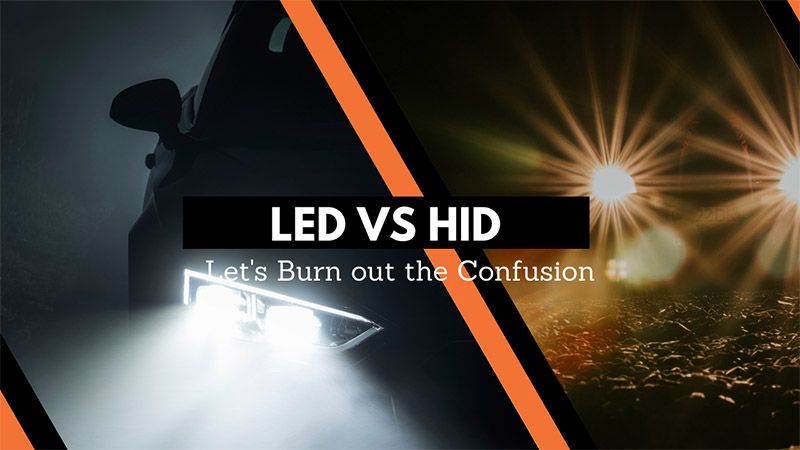LED vs Matrix LED lights : LED lighting long way

LED lighting has come a long way in the past decade or two. What was once considered a prohibitively expensive technology. Is now the standard for most modern vehicles.
A big part of this popularity has to do with the efficiency and power advantage of LED lights. Witch surpasses most modern lighting systems in longevity as well.
A lot of these advantages are essentially built into the lighting system itself. Which replaces traditional chemiluminescence-based systems. With a more compact and efficient electroluminescence-based one.
In simpler terms, where halogens and xenons rely on burning filament and gas to produce light. LEDs instead bypass the whole process by simply converting electricity into light.
This not only reduces the energy required to produce the light. It also removes the excess heat that comes as a byproduct of the chemical process.
This not only makes it possible to reduce the size of the light housing. It also makes them a lot more thermally efficient. Which in turn increases the longevity of the bulbs.
Since these lights are so compact, we can stack them even more tightly. Which is a great way of creating more powerful lighting systems. That also doesn’t have to worry about a single point of failure.
This is why we often see LED lights with multiple individual diodes stacked together. In both commercial and consumer level products. So, why not use it for car headlights as well.
This was the train of thought that led to the creation of Matrix LED lighting systems for cars. Which is an evolution of the LED headlights that have become the standard for cars today.
These lights differ from standard LED lights in a number of ways. We will list these differences, so you can get an idea of which one suits you best.
Creation
Not all LEDs are created the same. The design choices and material costs depend on the use case. This can range from single-LED systems that feature the standard OEM housing.
To custom multi-LED systems that need an entirely new headlight assembly. Along with individually calibrated LED controllers that can change the color and intensity of every single light at the click of a button.
With single-LED lights, you can simply replace the OEM bulb with an aftermarket one. From brands like OSRAM, who have multiple offerings under their Night Breaker and LEDriving series of LEDs.
Matrix LEDs are instead created by car manufacturers and aftermarket custom shops. Who take time to integrate the design with the overall aesthetic of each vehicle.
Performance
Individual LED bulbs already outperform the best lighting systems in the market today. Short of niche futuristic setups like Laser Lights.
So, you can guess the exponential performance increase you will get. By stacking multiple LEDs together in a Matrix array.
Moreover, since each LED is focused on lighting specific sections of the road ahead. They can have a tighter beam, with more intense light.
Systems like the one in the Mercedes S Class, that have up to 90 individual LEDs. Which offers a compounded total light output that is unlike any other.
With multiple LEDs sharing the load, you can also run them much more efficiently. Without having to push the maximum limits, which helps prevent any loss in longevity.
Adaptive Lighting
Another benefit of having individual control over all the lights is adaptability. You can change the intensity of the light to match the requirements of the driver.
This can mean something as simple as reducing the intensity of the LEDs in the center of the cluster. To reduce glare for oncoming drivers.
To more complex systems which use camera systems to detect vehicles. And switch off individual LEDs that would spare the vehicle from seeing any light at all.
Another application of this adaptability is pedestrian warning systems. That use AI algorithms to detect when pedestrians are about to step on the road.
Then, flash the LEDs that focus on that section of the road brightly. To warn the pedestrians before they come in front of your vehicle.
Other possible features include advanced corner lighting on hills. That uses steering input data and cameras to see the curves ahead. Then, adjust the angle and intensity of the beams to match the curve as you drive.
These systems will only get better with time. As more user data helps improve the capability of these machine learning systems. This is truly the future of lighting.
Entertainment
This is something that is quite experimental at this stage but could be a huge USP in the coming future. Which is, using matrix LED headlights to project images and videos on a wall ahead.
Audi recently unveiled a system like this in their Audi A6 E-Tron Concept. Which adds a new dimension to the usability of LEDs for entertainment purposes.
Most modern cars already have state-of-the-art audio systems. As well as huge touchscreen displays that feature Apple and Android Car Play systems.
So, it is not that big of a leap to get to a place where your car can become a mobile entertainment hub. With lots of storage space to keep huge blankets or foldable screens. You can have a complete theater experience anywhere you want. Even out in the wilderness, while camping under the stars.
Cars are already our second homes, and these modern Matrix LED systems only add to that notion. It is only a matter of time, before these systems reach scale, and become the new standard of LED lighting.
Until then, we still have to contend with more affordable and adaptable OEM replacement LED lights. From brands like OSRAM, who offer a wide range of them for each segment of the market.
Pricing
This is true not only because of the steep price difference between the two lighting systems. But also, the additional complexity of replacing existing headlight assemblies with Matrix modules.
It will take the major automotive manufacturers quite some time to phase out general reflector-based systems with Matrix LED ones. This is why for now, LED lights remain the more feasible option.
Hopefully, this gave you an accurate estimate of the differences between LED and Matrix LED headlight systems. As well as an idea of what these systems could evolve into, in the coming future Read More










